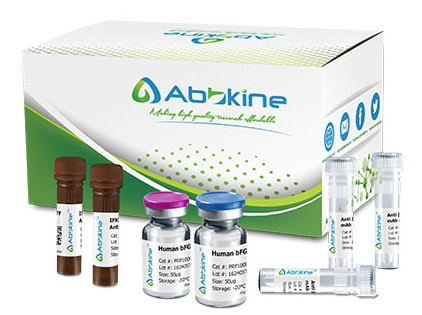Unlike most of the synaptotagmins, SYT13 does not have an N-terminal transmembrane region. Its C2 domains are lacking almost all the residues involved in Ca2+ binding. It is highly expressed in brain and also detectable at lower levels in non-neuronal tissues. SYT13 can suppress liver tumour cells and this function may be mediated through pathways implicated in mesenchymal to epithelial transition. It also affects insulin secretion.
Human Synaptotagmin-13 (SYT13) ELISA Kit employs a two-site sandwich ELISA to quantitate SYT13 in samples. An antibody specific for SYT13 has been pre-coated onto a microplate. Standards and samples are pipetted into the wells and anySYT13 present is bound by the immobilized antibody. After removing any unbound substances, a biotin-conjugated antibody specific for SYT13 is added to the wells. After washing, Streptavidin conjugated Horseradish Peroxidase (HRP) is added to the wells. Following a wash to remove any unbound avidin-enzyme reagent, a substrate solution is added to the wells and color develops in proportion to the amount of SYT13 bound in the initial step. The color development is stopped and the intensity of the color is measured.
Human Synaptotagmin-13 (SYT13) ELISA Kit listed herein is for research use only and is not intended for use in human or clinical diagnosis. Suggested applications of our products are not recommendations to use our products in violation of any patent or as a license. We cannot be responsible for patent infringements or other violations that may occur with the use of this product.
Find more details at http://www.abbkine.com/product/human-synaptotagmin-13-syt13-elisa-kit-kte60428/
bio-equip.cn




